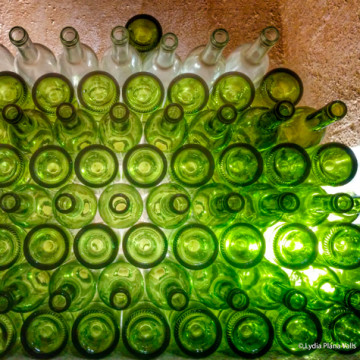Wineries and Wine Routes CAVA (SPARKLING WINE) D.O.
Who said champagne? In Catalonia, we have cava! The area of cava production is made up of 160 municipalities, and Penedès is the region that concentrates more than 95% of this production, and in particular Sant Sadurní d'Anoia, with more than 75%. In 1872 the first bottles were filled, the Regulatory Council for Sparkling Wine was established in 1972 and in 1993 the first Cava Regulatory Council. The origin of the cava is closely linked to the Catalan viticulture of the mid-nineteenth century. During the 19th century, many families of Sant Sadurní d'Anoia began experimenting with this technique to give way to the cava, with an identity that is their own and that makes it different from any other quality wine.
Why is it special?
The microbiology studies of Louis Pasteur applied to the wine allowed to control the second fermentation in the bottle, and the discovery of the cork stopper did not lose the bubbles. Thus the traditional or champenoise method was born, a technique that during the 19th century several families of Sant Sadurní d'Anoia applied to the crops. With the test of the Instituto Agrícola Catalán de Sant Isidre, the native varieties of white grape were chosen, from where the cava was born. In 1872, Josep Raventós, from Codorniu, elaborated the first 3,000 bottles of cava according to the method of the second fermentation. His son and heir, Manuel Raventós, started the expansion of the company, while other producers also began to produce cava. During the 1920s, cava gained strength in the market, and consolidated internationally in the 1980s. Today it is one of the most dynamic sectors, with a production of more than 200 million bottles a year.
What to do?
On the Costa Daurada (Golden Coast) there are different wineries that open their doors to the visitor. The wineries dot the fields and let you know from the inside the process from the vineyards to pressing and bottling. For example, you can visit the Vinícola de Nulles, one of the wine cathedrals of Catalonia, which has recently been awarded for making a delicious sparkling wine. Very close to our regions, Sant Sadurní d'Anoia is recognized as the capital of the cava. A visit to the Codorniu winery, by the modernist architect Puig i Cadafalch, with 26 kilometers of underground caverns, is also a must, as are the Freixenet, Torelló, Raventós i Blanc and Gramona caves. The Cava Week celebrated in Sant Sadurní, serves to promote this product in Catalonia. Of the festive acts, the coronation and proclamation of the cava queen, the route of the cava train and the Cavatast, a sample of cavas and gastronomy of the Penedès stand out.
Grapes with DNA :
DO Cava
The varieties of white grape, the “Trepat” and also some red varieties are suitable for making cavas. On the Costa Daurada we grow “Macabeu”, “Xarel·lo”, “Malvasíes” and “Chardonnay”, the basis for making the cavas of the DO Cava.
Consell Regulador de la Denominació d'Origen Cava
Av. Tarragona, 24
CP 08720, Vilafranca del Penedès
Tel. 938903104 Fax: 938901567
consejo@crcava.es
www.crcava.es
Find all proposals and knows their situation
Map: locate activities







